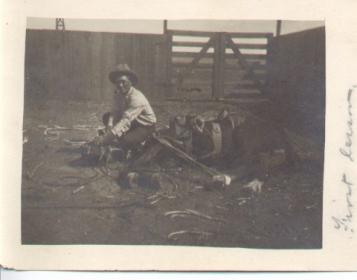[QUOTE=Wirt;7246286]
That fellows video is not the definitive word on the use of a hackamore. Perhaps you have never really seen a good hackmore horseman,since you seem to have a low opinion of a hackamore. From what I have read of your post, you really don’t understand them. From the looks of your photos, you use one as if it is a side pull, and have taken all the movement out of one, and there is no nose button on yours, it looks like. It needs to move and swing a little, but it needs to be properly adjusted, be the correct diameter, softness, life in it,and have the right feel to the horse The swinging that is caused just by the horse in motion is minimal, and is not really an issue. Too loose it will twist, but that is why the nose button has to be the right shape for the horses face. That is also why you have to pay attention to what you are doing, and make sure you get the correct response. Starting a horse in a hackamore is very revealing in how it works, and how much feel you have, and you have to go slower, really. If you have a horse with a lot of feel, it is the best tool to create a bridle horse. The guy in the video doesn’t have a lot of feel, in my opinion.
The best hackamore book of late is Bobby Ingersols “The Legendary California Hackamore and Stock Horse”[/QUOTE]
I did not show it because of the rider, but as an example of a bosal bumping along, as I made clear in the post.
It is in the nature of the beast, the larger diameter bosals will bump along.
I don’t know if that rider knows how to use a hackamore to start a colt, he said the filly had several months with a snaffle, which is a different kettle of fish, as it obvious, the way she is working with that new gadget, but already knows to listen to the rider.
Definitely the colt starting grass rope nose hackamore is a very different tool and for many, a better one than a bosal.
Those were the original hackamores, what was used before the California vaquero tradition started braiding rawhide into their bosals.
This is the way colts were started in the very early 1900’s, with a woven/braided string homemade hackamore.
The picture, taking right on our ranch, was called “First Lesson” and it was taken around 1911, in the smaller mule pen:



